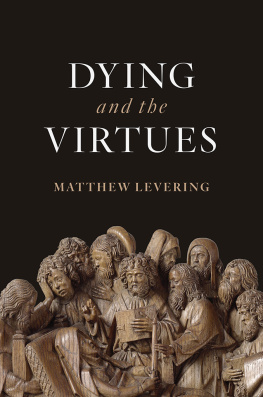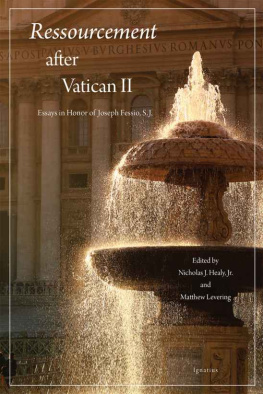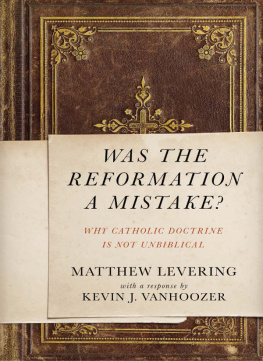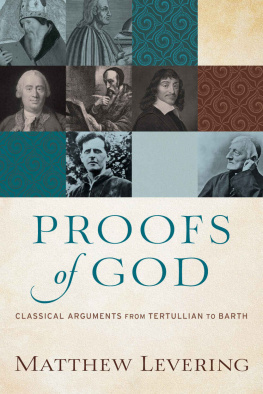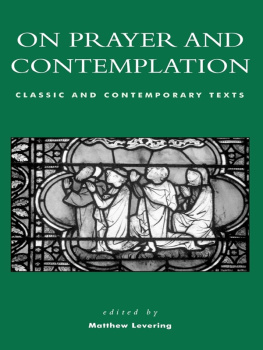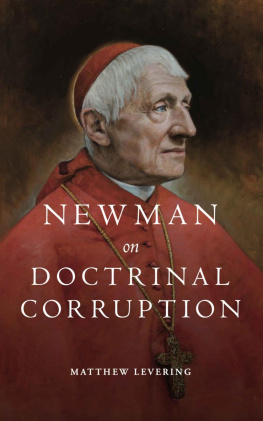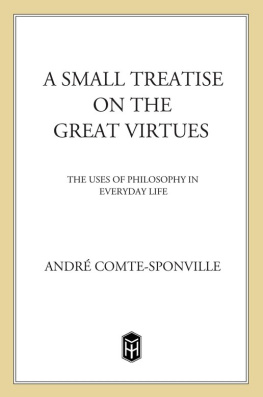Dying and the Virtues
Matthew Levering
WILLIAM B. EERDMANS PUBLISHING COMPANY
GRAND RAPIDS, MICHIGAN
Wm. B. Eerdmans Publishing Co.
2140 Oak Industrial Drive NE, Grand Rapids, Michigan 49505
www.eerdmans.com
2018 Matthew Levering
All rights reserved
Published 2018
27 26 25 24 23 22 21 20 19 181 2 3 4 5 6 7 8 9 10
ISBN 978-0-8028-7548-8
eISBN 978-1-4674-4957-1
Library of Congress Cataloging-in-Publication Data
Names: Levering, Matthew, 1971 author.
Title: Dying and the virtues / Matthew Levering.
Description: Grand Rapids, Michigan : William B. Eerdmans Publishing Company, [2018] | Includes bibliographical references and index.
Identifiers: LCCN 2017029708 | ISBN 9780802875488 (hardcover : alk. paper)
Subjects: LCSH: Virtues. | DeathReligious aspectsChristianity.
Classification: LCC BV4630 .L48 2018 | DDC 236/.1dc23 LC record available at https://lccn.loc.gov/2017029708
Unless otherwise noted, Scripture quotations are from the New Revised Standard Version of the Bible (NRSV), copyright 1989 by the Division of Christian Education of the National Council of the Churches of Christ in the U.S.A., and used by permission.
To Andrew Hofer, OP
Contents
A number of wonderful people, friends in Christ, made the writing of this book possible. It began with an invitation from Tom McCall and Geoffrey Fulkerson of the Henry Center at Trinity Evangelical Divinity School. I presented early versions of chapters 4 and 5. A shortened version of chapter 5 has appeared as The Dying of Macrina and Death with Dignity, Trinity Journal 38 (2017): 2952. Thanks to George Kalantzis, my co-organizer for the March 2016 On Christian Dying conference at Wheaton College, I presented an early version of chapter 1 and received valuable feedback, especially from John Sikorski and Todd Billings. A version of this paper will appear in Christian Dying, edited by George Kalantzis and Matthew Levering (Eugene, OR: Cascade Books, 2018). Thanks to Carlos Casanova, I traveled to Santiago, Chile, to deliver an early version of chapter 7 to the III Congreso Internacional de Filosofa Tomista at the Universidad Santo Toms. This was a wonderful opportunity to meet distinguished Chilean, Argentinian, Spanish, and Polish Thomistic scholars and doctoral students. A version of this paper will appear in the conference volume edited by Carlos Casanova.
Thanks to Matthew Umbarger, I gave three lectures as part of the August 2016 CIT/NSP Summer Symposium at Newman University in Wichita, Kansas. I presented versions of what became chapters 1, 3, and 5, and received helpful responses in an atmosphere of warm collegial friendship. Thanks to Chad Raith, I presented an early version of chapter 4 to a September 2016 conference titled Engaging the Book of Acts, Engaging One Another: Catholics, Orthodox, and Evangelicals, sponsored by the Paradosis Center at John Brown University. A version of my paper will appear in the conference volume that Chad is editing (Washington, DC: Catholic University of America Press, 2018). In November 2016, Philip Porter and Thomas Pfau invited me to deliver The Unbearability of Annihilation: Jobs Challenge to His Creator to the Thomistic Institute at Duke University Divinity School, where I received more valuable corrections. Thanks to Michael Dauphinais and Roger Nutt, I gave a Theology Graduate Programs Master Seminar at Ave Maria University in January 2017, at which I delivered a version of chapter 7. Lastly, at a March 2017 conference titled Imagining the Eschatological State, which George Kalantzis and I co-organized at Wheaton College, superb papers by Rita George-Tvrtkovic and Cyril ORegan prompted last-minute corrections to chapter 9. I am particularly grateful to Rita for her generous help in assembling secondary literature related to chapter 9.
Five of the nine chapters, then, received extensive corrections during the writing process from audiences of scholars and students. Fortunately for me, the other chaptersand indeed the whole manuscriptbenefited from three generous friends who were willing to read drafts of the manuscript. Alex Pierce, who was once my student and is now a dear friend (and who this fall will enter the PhD program in patristics at the University of Notre Dame), read the entire manuscript at a late stage and made a large number of crucial emendations. Father Andrew Hofer, OP, likewise read the manuscript with care and insight and caught some major errors. At the final stage of the project, Todd Billings read the whole manuscript with an encouraging eye, and he too gave me an important correction.
At Eerdmans, Michael Thomson supported this manuscript when it was only an idea. Michael, whose friendship over the past few years has been a delight, read the manuscript at an early stage and made important corrections especially in chapter 8. Jenny Hoffman and Gary Lee, the copyeditor for Eerdmans, did a fantastic job with the manuscript in the production stage.
Let me thank the rector and the academic dean at Mundelein Seminary, Fr. John Kartje and Fr. Thomas Baima, respectively, for making my job much easier than it would be without their presence. My gratitude extends also to Jim and Molly Perry, who generously endowed the chair that I hold at the seminary. My superb research assistant and dear friend David Augustine (now a PhD candidate in systematics at Catholic University of America) helped with chapter 1, and he also graciously did the bibliography for this book. I owe special thanks also to Mary Bertram, whose excellence is legendary at the seminary, and to Kim ONeill, who generously helped me with printing over the past year. To my children and my wife Joy, what would I do without you? Joy, you are beautiful and lovely (Gen. 29:17 Revised Standard Version [hereafter RSV]). May God reward your faith, your profound love, your care for others, and your hard work.
I dedicate this book to a man who befriended me and my family a decade ago, when in July or August 2006 he carried an air conditioner up the stairs of a rental house in South Bend, thereby making our life bearable in the hottest house that I have ever lived in! He has been a wise and serene counselor, generous and encouraging. Dear God, bless your servant Andrew Hofer, and make his life in service to your kingdom exceedingly fruitful (Gen. 17:6). Enable him, together with his many friends, to journey through the valley of the shadow of death (Ps. 23:4) to the place whose lamp is the Lamb (Rev. 21:23).
The meaning of dyingand thus the question of what comes after deathis obviously a crucial one for Christians.
Greenways connection of fear of personal annihilation with self-centered egoism is understandable but mistaken. After all, personal annihilation cuts off any future possibility of selfless communion with God and others, and humans who have experienced such interpersonal communion cannot avoid desiring its continuance. Thus, as Anthony Thiselton points out, for much of the Old Testament the worst feature of death was possible separation from God, after a life of communion with him. Especially now that we have experienced the joy of knowing and loving Jesus Christ, annihilation would be a dreadful fate, cutting us off from divine friendship. The apostle Paul remarks along these lines, If for this life only we have hoped in Christ, we are of all people most to be pitied (1 Cor. 15:19). We would be most to be pitied because our intense experience of communion with God in Christ would end in literally nothing.
As Paul knows from personal encounter with the risen Lord, however, in fact Christ has been raised from the dead (1 Cor. 15:20). Therefore, Paul looks forward confidently to the final conquest of death through the new creation of the whole cosmos in Christ, who through the Spirit will establish Gods people in everlasting communion with the Father. Well aware that he is using imagery to describe realities too glorious for description, Paul tells the Corinthians that the trumpet will sound, and the dead will be raised imperishable, and we will be changed.... When this perishable body puts on imperishability, and this mortal body puts on immortality, then the saying that is written will be fulfilled: Death has been swallowed up in victory. Where, O death, is your victory? Where, O death, is your sting? (1 Cor 15:52, 5455).

